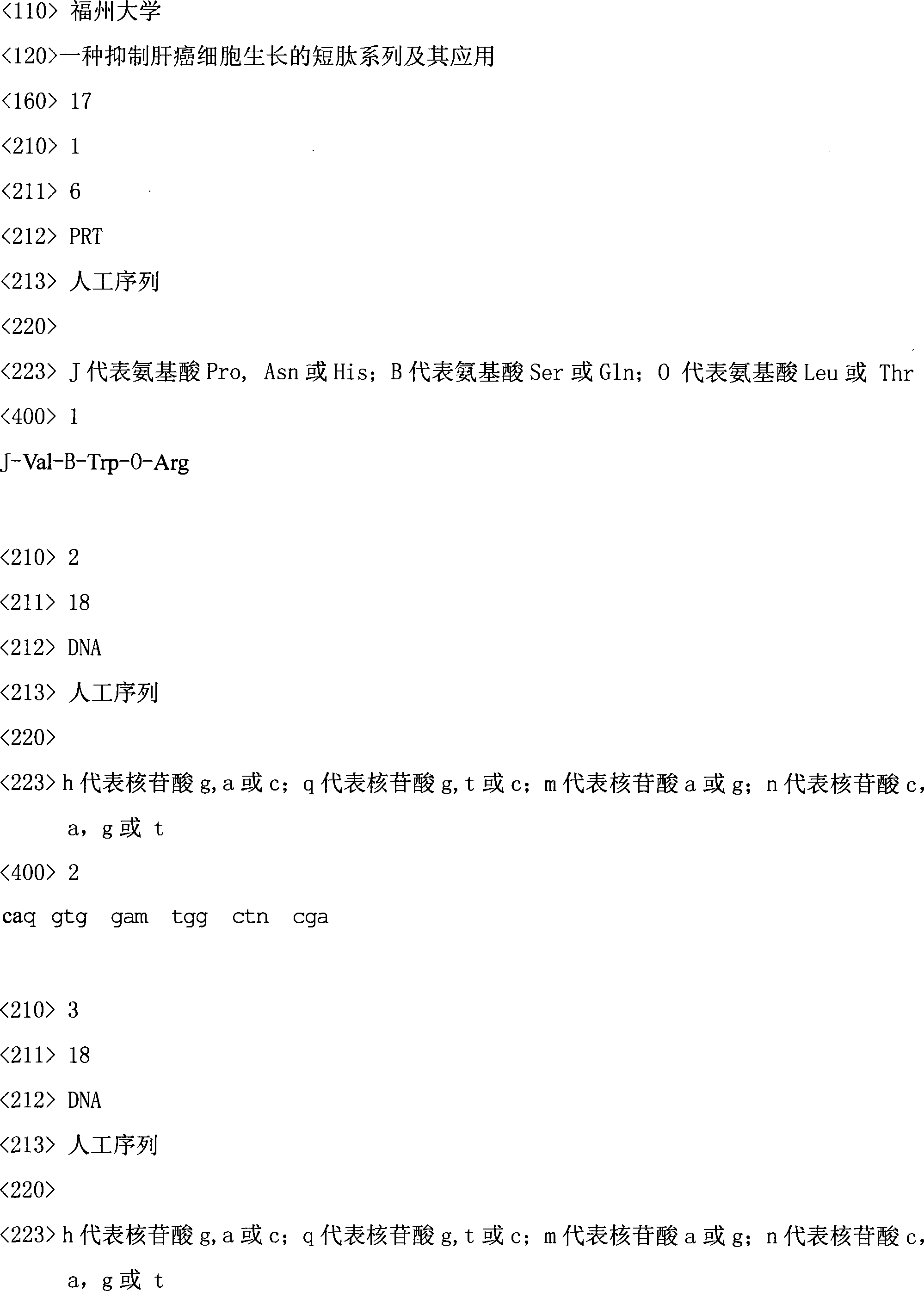Short peptide for inhibiting growing of liver cancer cell and application thereof
A technology for inhibiting liver cancer and short peptides, which is applied in the field of short peptide series for inhibiting the growth of liver cancer cells, can solve the problems of patients suffering, chemotherapy drugs, bone marrow suppression, death, etc., and achieve the effect of solving serious injuries
- Summary
- Abstract
- Description
- Claims
- Application Information
AI Technical Summary
Problems solved by technology
Method used
Image
Examples
preparation example Construction
[0016] The preparation method of the short peptide adopts a chemical synthesis method, that is, a very mature solid-phase peptide synthesis method well known in the art, and either the Boc method or the Fmoc method can be used. The specific method is to couple the protected amino acids to the inert solid phase carrier one by one, and then use strong acid to cleave the peptide chain from the carrier, and remove the side chain protection at the same time.
[0017] The amino acid main sequence of the short peptide is a main sequence with fixed amino acid positions, and the corresponding amino acids are selected and arranged at the interval positions. For example, there are 3 kinds of Pro, Asn or His amino acids at the J position, and these 3 kinds of amino acids can be placed in a single place. At the position of J in , no matter which one is selected, the short peptide still has its original biological activity, that is, inhibiting the growth of malignant liver tumor cells, and t...
Embodiment 1
[0033] Test of inhibiting liver cancer cells (synthesis of the short peptide involved in the present invention: Pro-Val-Ser-Trp-Leu-Arg)
[0034] The human liver cancer cell line Hepg2 cells were cultured with RPMI 1640 medium containing 10% newborn bovine serum, with 5×10 5 The cell density per well was planted into a 96-well cell plate. After 24 hours, the short peptides involved in the present invention were added to the cell culture plate according to different concentrations, and an equal volume of PBS was used as the control group. After 24, 48, and 72 hours, The survival rate of living cells was tested by MTT method, and the inhibition rate of liver cancer cells was up to 71% compared with the control group.
Embodiment 2
[0036] Test of inhibiting liver cancer cells (synthesis of the short peptide involved in the present invention: Pro-Val-Serp-Trp-Leu-Arg)
[0037] Human liver cancer cell line Bel-7402 cells were cultured with RPMI 1640 medium containing 10% newborn bovine serum, with 5×10 5 The cell density per well was planted into a 96-well cell plate. After 24 hours, the short peptides involved in the present invention were added to the cell culture plate according to different concentrations, and an equal volume of PBS was used as the control group. After 24, 48, and 72 hours, The survival rate of living cells is tested by MTT method, and the inhibition rate of liver cancer cells can reach 75% when compared with the control group.
PUM
 Login to View More
Login to View More Abstract
Description
Claims
Application Information
 Login to View More
Login to View More - R&D Engineer
- R&D Manager
- IP Professional
- Industry Leading Data Capabilities
- Powerful AI technology
- Patent DNA Extraction
Browse by: Latest US Patents, China's latest patents, Technical Efficacy Thesaurus, Application Domain, Technology Topic, Popular Technical Reports.
© 2024 PatSnap. All rights reserved.Legal|Privacy policy|Modern Slavery Act Transparency Statement|Sitemap|About US| Contact US: help@patsnap.com










